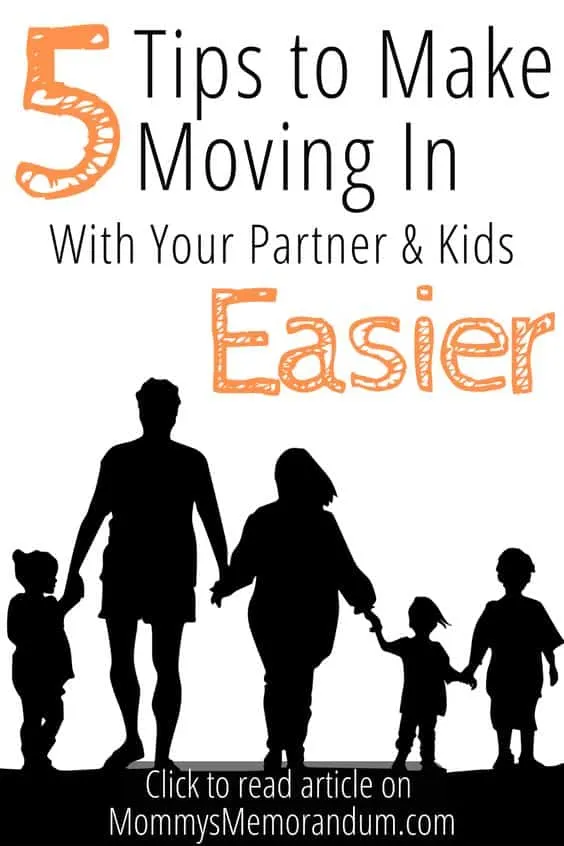Make Moving In With Your Partner and Children Easier: A Comprehensive Guide
The Brady Bunch Challenge
Remember the iconic Brady Bunch? The beloved sitcom chronicled the humorous ups and downs of two families merging into one. While the show brought laughs, the real-life scenario of moving in with a partner who has children can be more complex than it appears on screen. Transitioning from a solo lifestyle to blending families requires thoughtful planning and open communication. If you’re gearing up for this big step, here’s how to make the process smoother and create a harmonious family environment.
According to the American Psychological Association, about 60% of blended families face significant challenges in the first few years, but with effective communication and patience, many can successfully integrate.

Open Communication with Your Children
Why Communication Matters
Children, even the youngest ones, are incredibly perceptive. They can sense changes in their environment and the emotions of those around them. It’s essential to communicate openly with them about the upcoming move.
Tips for Effective Communication
- Be Transparent: Sit down with your child and discuss the move. Explain what will change and what will stay the same.
- Acknowledge Their Feelings: Understand that your child might have mixed emotions about the transition. Listen to their concerns and reassure them that their feelings are valid.
By keeping communication lines open, you help your child adjust more comfortably to the new family dynamics.
A study published in the Journal of Family Psychology found that children who experience open and honest communication about family changes adjust better emotionally, with a 30% higher rate of positive adaptation compared to those who are kept in the dark.
Sit Down with Your Partner
Aligning Parenting Styles
Before moving in together, it’s crucial to discuss parenting approaches with your partner. Every parent has their own style, and aligning these is key to preventing conflicts.
Discussion Points
- Parenting Philosophy: Talk about the values you want to instill in your children.
- Rules and Boundaries: Discuss expectations regarding curfews, screen time, and discipline.
- Conflict Resolution: Agree on how to address misbehavior and other parenting challenges.
Having these discussions beforehand sets a clear foundation and helps avoid misunderstandings later.
Embrace the Changes
Adjusting to a New Routine
Combining households means blending different routines and preferences. From cleaning habits to bedtime rituals, expect some adjustments.
Strategies for Smooth Transition
- Compromise: Be ready to adapt and find middle ground on various household matters.
- Flexibility: Understand that your new home will have new routines, including toy-strewn living rooms and the occasional chicken nugget meal.
The key is to approach these changes with a spirit of cooperation and adaptability.
Integrate Your Ex-Partner and Current Partner
Fostering Positive Relationships
Building a relationship between your current partner and your child is essential but should happen gradually.
Steps to Consider
- Discuss the Move with Your Ex: Ensure your ex-partner is aware of the transition and keep them informed about the changes.
- Avoid Immediate Labels: Don’t rush your child into calling your partner a step-parent. Let the relationship develop naturally.
Maintaining an open dialogue with your ex and your child helps ease the transition and reduces feelings of displacement.
According to a report by the National Stepfamily Resource Center, children in blended families who witness ongoing conflict between their parents and stepparents are 50% more likely to experience emotional difficulties compared to those in families with lower conflict levels.
Maintain Familiarity
Keep Routines Consistent
Keeping aspects of your child’s current routine can provide a sense of normalcy amidst the change.
How to Maintain Stability
- Same School: If possible, keep your child in the same school to avoid disrupting their education.
- Social Connections: Continue to invite friends and family over, maintaining the social interactions they are used to.
Familiarity can ease the emotional impact of the move and make the transition less daunting.
The National Institute of Child Health and Human Development (NICHD) states that maintaining familiar routines and stability during family transitions can significantly reduce stress for children, contributing to a smoother adjustment process.
Find Support
Seek Guidance and Comfort
You’re not alone in this journey. Reach out to friends, family, or support groups who may have faced similar experiences.
Resources
- Online Forums: Research and read about others’ experiences online.
- Family and Friends: Consult those who have navigated similar situations for advice and reassurance.
By leaning on your support network, you can find valuable insights and comfort as you adjust to your new family dynamics.
Final Thoughts:
By following these steps, you can help make moving in with your partner and children a positive and successful experience. Embrace the changes, communicate openly, and seek support when needed to create a happy and harmonious home.
